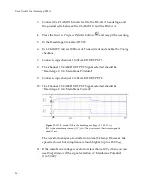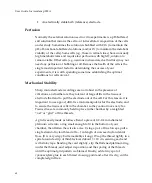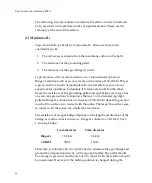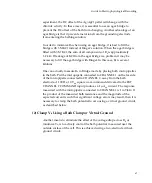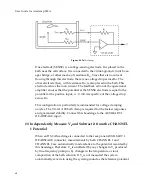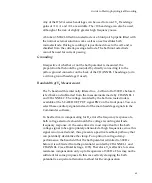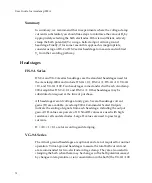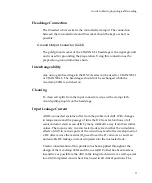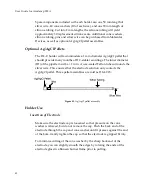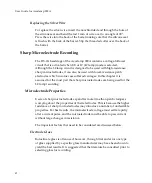
Guide
to
Electrophysiological
Recording
experiment,
the
DC
offset
of
the
Ag/AgCl
pellet
will
change
with
the
chloride
activity.
In
these
cases,
it
is
essential
to
use
an
agar
bridge
to
prevent
the
DC
offset
of
the
bath
from
changing.
Another
advantage
of
an
agar
bridge
is
that
it
prevents
metal
ions
from
the
grounding
electrode
from
entering
the
bathing
solution.
In
order
to
minimize
R
b
when
using
an
agar
bridge,
it
is
best
to
fill
the
bridge
with
3
M
KCl
instead
of
Ringer’s
solution.
When
the
agar
bridge
is
filled
with
3
M
KCl,
the
sum
of
all
components
of
R
b
is
approximately
1–2
k
Ω
.
If
leakage
of
KCl
from
the
agar
bridge
is
a
problem,
it
may
be
necessary
to
fill
the
agar
bridge
with
Ringer.
In
this
case,
R
b
is
several
kilohms.
One
can
actually
measure
R
b
in
Bridge
mode
by
placing
both
micropipettes
in
the
bath.
Put
the
micropipette
connected
to
CHANNEL
1
on
the
far
side
of
the
micropipette
connected
to
CHANNEL
2,
away
from
the
bath
electrode.
A
100
Hz,
10
V
p-p
square
wave
command
delivered
to
the
EXT.
CHANNEL
2
COMMAND
input
produces
a
1
μ
A
p-p
current.
The
response
measured
with
the
micropipette
connected
to
CHANNEL
1
is
1
mV/k
Ω
.
If
the
product
of
the
measured
bath
resistance
and
the
magnitude
of
the
expected
current
is
such
that
significant
voltage
errors
may
result,
then
it
is
necessary
to
clamp
the
bath
potential
to
zero
using
a
virtual
ground
circuit,
as
described
below.
(2)
Clamp
V
b
Using
a
Bath
Clamp
or
Virtual
Ground
Another
means
to
eliminate
the
effect
of
the
voltage
drop
across
R
b
,
or
minimize
V
b
,
is
to
actively
control
the
bath
potential,
measured
near
the
outside
surface
of
the
cell.
This
is
achieved
using
a
two
‐
electrode
virtual
‐
ground
circuit:
67




